Artificial intelligence (AI) is growing at an astounding rate. Following the emergence of ChatGPT around the 2023 Spring Festival, the global AI market is once again booming in 2024, with OpenAI launching the AI video generation model Sora, Google unveiling the new Gemini 1.5 Pro, and NVIDIA introducing a local AI Chabot. The innovative development of AI technology has triggered intense changes and explorations in various industries, including the sports sector.
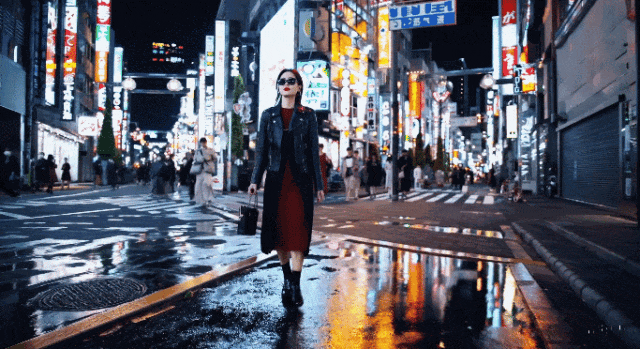
OpenAI Sora example video
Since last year, the International Olympic Committee President Thomas Bach has repeatedly emphasized the importance of harnessing the power of AI. At his suggestion, the IOC established an AI task force to study the impact of AI on the Olympics and Olympic sports. This move demonstrates the sports industry’s attention to AI technology and provides more opportunities for its application in the field.
2024 is a big year for sports, with several major events scheduled to take place, including the Paris Olympics, the UEFA Euro, the Copa America, as well as the four Grand Slam tennis tournaments, the Thomas Cup, the World Aquatics Championships, and the Ice Hockey World Championships. With the advocacy and promotion of the IOC, AI technology is expected to play an important role in more sports events.
LED displays are essential facilities in large sports venues nowadays. In recent years, the application of such screens in the sports field has become more diverse. Besides presenting sports data, match replays, and commercial advertisements, LED screens can be used creatively. For example, the NBA unveiled an LED court for the first time during the 2024 NBA All-Star Game. Additionally, many LED companies are striving to explore new applications of LED displays for sports events.
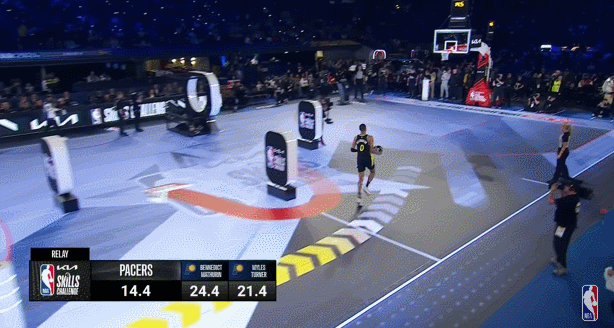
NBA adopts the first-ever LED court for All-Star 2024 events
When LED screens, AI, and sports come together, what kind of magic will they create?
LED Displays Will Empower the Sports Industry to Embrace AI
Technology has advanced rapidly over the past two decades, with AI constantly breaking new ground. This cutting-edge technology has become deeply connected with the sports industry. In 2016 and 2017, Google’s AlphaGo robot defeated human Go world champions Lee Sedol and Ke Jie respectively, sparking global attention to the application of AI technology in sports events. As time has passed, the application of AI technology in sports venues has continued to expand.
In sporting events, real-time scores are crucial for athletes, spectators, and the media alike. Major events like the Tokyo Olympics and the Beijing Winter Olympics have begun using AI-assisted scoring systems to generate real-time scores through data analysis, enhancing the fairness of competitions. As the primary medium for disseminating sports information, LED displays offer advantages such as high contrast and dustproof/waterproof features, enabling clear presentation of event information and effectively supporting AI technology to ensure smooth running of sporting events.
In terms of live broadcasts, sports leagues like the NBA are starting to utilize AI to edit game content and present it to viewers, making the role of LED broadcast screens particularly important. LED broadcast screens can display the entire game and highlights in high definition, providing a more vivid and realistic viewing experience. Additionally, LED broadcast screens provide an ideal platform for showcasing AI technology, presenting the intense atmosphere and exciting moments of the game vividly to the audience. The use of LED broadcast screens not only improves the quality of live broadcasts but also enhances audience engagement and interaction with sports events.
The perimeter LED screens surrounding the stadium are mainly used for displaying commercial advertisements. In recent years, generative AI has made a significant impact on advertising design. For example, Meta recently proposed plans to develop more AI advertising tools, with Sora capable of generating custom-themed background images for sports and leisure brands in minutes. Leveraging LED perimeter screens, businesses can flexibly display personalized advertising content, thereby enhancing brand exposure and marketing effectiveness.
In addition to displaying game content and commercial advertisements, LED screens also serve as vital components of intelligent training facilities. For example, at the Jiangwan Sports Complex in Shanghai, China, there is a specially designed intelligent digital interactive LED court called the House of Mamba. The basketball court is entirely made up of LED screens—capable of real-time image, video, and data presentation—and equipped with a precise motion tracking system, allowing players to engage in enhanced training, receive action guidance, and participate in skill challenges according to training programs adopted by Kobe Bryant, increasing the fun and participation of training.
Recently, SMT under Shanghai Media Group and SenseTime jointly developed an "AI Empowered Sports" technical solution. The solution is equipped with the latest LED floor screens and utilizes AI measurement and AR visualization to display team scores, MVP data, countdowns for offensive teams, special effects animations, various images and text, as well as advertisements in real-time, providing comprehensive assistance for basketball games.
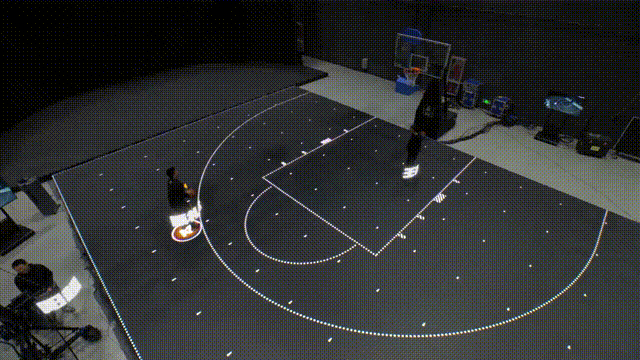
AR visualization: player position, basketball trajectory, teal-time scores (credit: SMT)
During the NBA All-Star events held in February this year, LED floor screens were also used. These elastic floor screens provide high-level shock absorption, almost identical to conventional wooden floors in performance but also make training more intelligent and personalized. This innovative application further promotes the integration of sports and AI, and relevant solutions are expected to be promoted and applied in more sports venues in the future.
In addition, LED displays play a crucial role in safeguarding sports venues. In some large sports venues, safety issues are particularly important due to their large capacity. Taking the 2023 Hangzhou Asian Games as an example, AI algorithms were used to analyze the flow of people on-site and provide intelligent traffic guidance. LED displays can present intelligent safety warnings and guidance service information. In the future, the combination of LED displays and AI algorithms will help ensure safety for sports venues.
The above examples are just the tip of the iceberg in the application of LED displays in the sports field. With the increasing integration of sports competitions and artistic performance, organizers of major sports events have attached greater emphasis on opening and closing ceremonies. LED displays with excellent effects and technological functions will see greater market demand. According to TrendForce's estimates, the LED video wall (large LED screens) market is expected to grow to $13 billion by 2026. In the industry trend towards AI and sports integration, the use of LED displays will better assist the sports industry in embracing AI advancement.
How can LED display manufacturers seize the initiative in the field of AI-powered smart sports?
With the arrival of the sports boom in 2024, the demand for intelligent construction of sports venues will continue to rise, raising the bar for LED displays. Coupled with the inevitable trend of AI integration into the sports industry, how can LED display manufacturers seize the initiative in this competitive field?
In recent years, Chinese LED display companies have risen strongly, with China becoming a major global production base for LED displays. These companies have recognized the immense commercial value showcased by the sports industry, actively participating in various sports events and stadium projects, providing various types of display products. With the integration of technologies like AR/VR and AI, the application of LED displays in the sports sector has become increasingly diverse.
For example, Leyard utilized LED displays combined with VR and AR technologies at the Beijing Winter Olympics to create intelligent curling simulation experiences. Qiangli Jucai rolled out an LED video wall featuring user–display interaction through IR technology, enhancing user experience. These innovative applications of LED displays inject novelty and fun into sports events, enhancing their value.
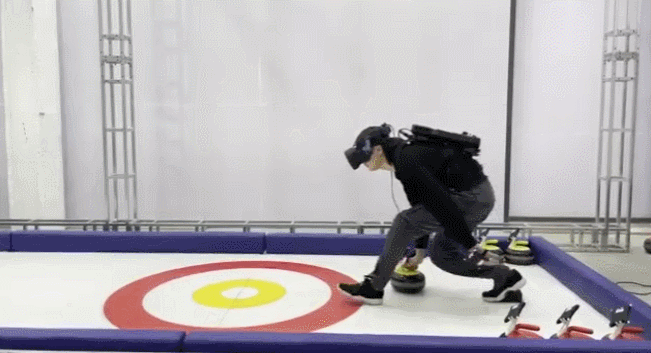
Leyard creates intelligent curling simulation experiences using VR and AR technologies (credit: Leyard)
Furthermore, compared to conventional sports events, Esports has garnered broader attention in recent years and was officially introduced as a competition event at the 2023 Asian Games. The IOC President Thomas Bach recently announced that the first Esports Olympics could take place as early as next year. The relationship between Esports and AI is also closely bonded. AI plays a crucial role not only in enhancing the gaming experience but also in the creation, production, and interaction aspects of the competition.
In the construction of Esports venues, LED displays play a crucial role. According to the "Esports Venue Construction Standards" promulgated by the Chinese government, Esports venues of Class C or above must be equipped with LED displays. The large size and high definition feature of LED displays better meet the viewing needs of live audiences. By combining technologies such as AI, 3D, and mixed reality, LED displays can create more realistic and vibrant game scenes, providing audiences with immersive viewing experiences.
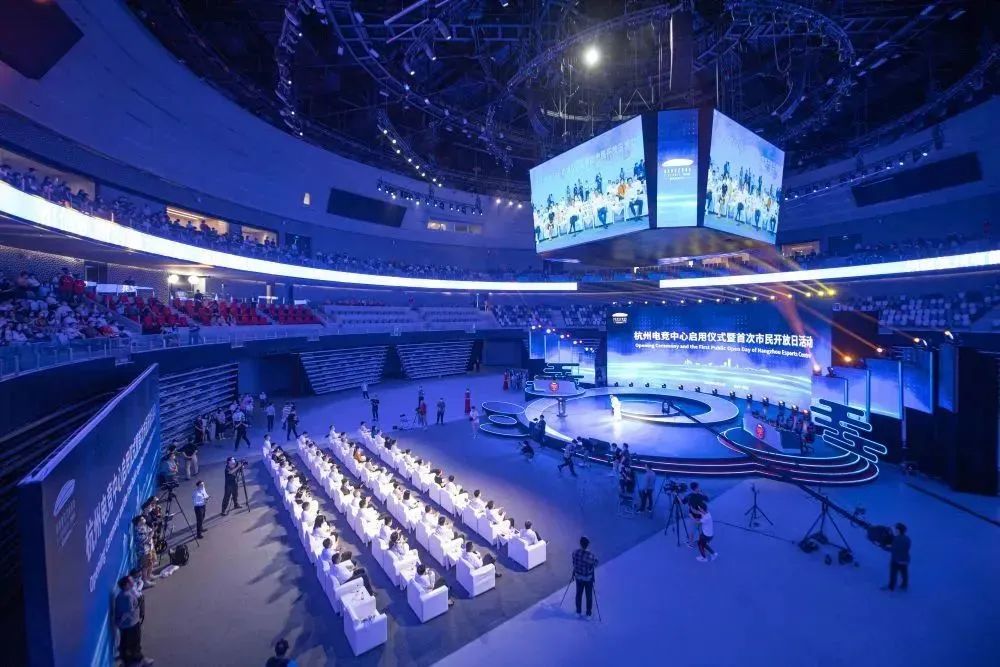
Hangzhou E-sports Center, China
Virtual sports, as part of the Esports ecosystem, serve as an important bridge connecting Esports and conventional events. Virtual sports present traditional sports content in virtual interactive forms using high-tech methods like AI and scene simulation, breaking the constraints of time, space, and environment. LED displays can provide more delicate and vivid visual presentations, becoming one of the key technologies to drive the upgrade of virtual sports experiences and event experiences.
Whether it’s conventional sports events, Esports competitions, or virtual sports, AI plays a significant role. This ground-breaking technology is penetrating the sports industry at an unprecedented pace. For LED display companies to capitalize on the opportunities brought by AI, it is crucial to keep pace with advancements in AI technology, continuously upgrade technical products, and innovate services.
In terms of technological innovation, LED display makers need to invest more resources in developing products with high refresh rates and low latency, meeting the high standards of sports event broadcasting. Furthermore, integrating AI technologies such as image recognition and data analysis can not only enhance the intelligence level of displays but also provide audiences with more personalized viewing experiences.
Product smartification and service upgrades are two other important strategies for display makers to enter the AI smart sports market. With AI technology, they can provide more intelligent display solutions tailored to the specific needs of different sports events and venues, offer comprehensive one-stop services (e.g., design, installation, maintenance), and achieve remote monitoring and fault prediction to ensure stable operation and improve customer satisfaction.
The construction of an AI ecosystem is also crucial for the development of LED display companies. Many players have begun to layout their plans to grasp the trends in AI technology development.
For example, Leyard has released the large-sized LYDIA1.0 action model and plans to continue research and development, integrating metaverse, digital humans, and AI to build a complete ecosystem. The company has also established a software company to venture into the AI field.
Unilumin has been actively responding to industry changes by implementing an "LED+AI" technology integration strategy. On January 30th this year, it released five relevant technologies, namely digital virtual humans, large vertical AI models, cross-modal generation, spatial perception, and virtual production, as well as four major applications including full-size transparent holographic cabinets, fish tank metaverse screens, digital asset platforms, and a light-field display showcasing a bunch of treasure.
Conclusion
Sports is just one of the many fields empowered by AI. Other areas such as tourism, educational conferences, outdoor advertising, smart homes, smart cities, and intelligent transportation are also domains where AI technology is being applied and promoted. In these areas, the application of LED displays is also crucial.
In the future, the relationship between AI technology and LED displays will become more interactive and close. As AI continues to develop, LED displays will see more innovations and applications. By integrating technologies such as human-computer interaction, brain-computer interfaces, and metaverse, the LED display industry is evolving towards a high level of intelligence and personalization.
(By Mia from LEDinside; Translator: Jane)
TrendForce 2024 Global LED Video Wall Market Outlook and Price Cost Analysis
Release Date: 28 September 2023
Language: Traditional Chinese / English
Format: PDF
Page: 273
|
If you would like to know more details , please contact:
|





 CN
TW
EN
CN
TW
EN










